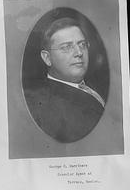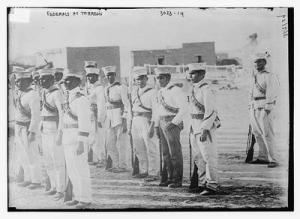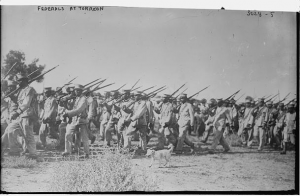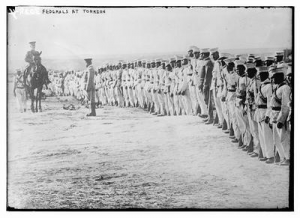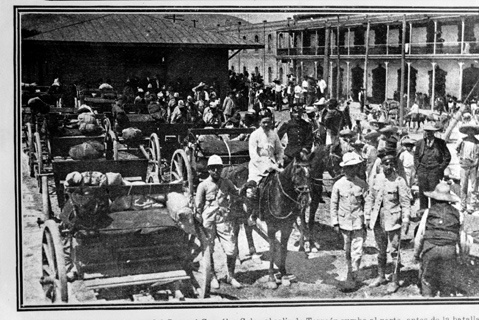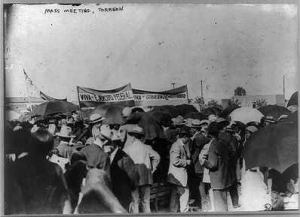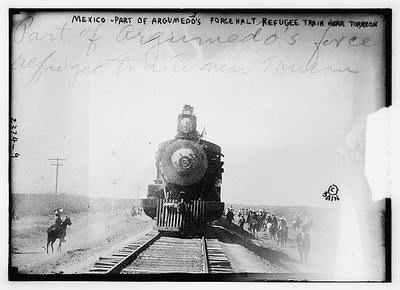No Post today. Tomorrow she receives letters – check back to see who they are from. Also check out the Escape from Mexico page. I added all the photo’s I could find from this time – and I finished the transcription. The follow up from yesterday is below. Click here to see it all!
Here is a look at what else was happening 80-years-ago today.
Ann Frank is 5 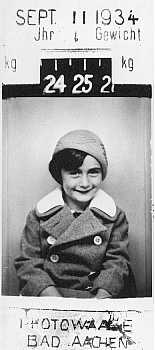
Cuban officials revealed the confiscation of five mail packages containing bombs addressed to American ambassador Jefferson Caffery.
More from the article Escape from Mexico written by J.P. Lancaster and published in the Atlanta Journal Constitution

Found on revolucionentorreon.galeon.com
Bridges Burned
When we reached San Pedro we learned that a train had been sent by the Mexican government over the line to see what condition the road was in. This train returned Friday morning and reported that they found two burned bridges and a washout.
Saturday morning a construction train came from Torres with instructions to pick up a part of Argumedo‘s men at San Pedro and place them along the line to protect it while the train went to repair the bridges. Up to noon Sunday nothing had been heard from them. Mr. Wolff occurred permission from the officer in charge of San Pedro to send men out on a car to trest with the rebels when they ran into their territory and thereby arrange for our trip through their territory. When this car, in which Mr Williams and Mr. Carver, caught up with the train which had gone out Saturday, the officers of the military train refused to report their pass, which was issued by their own superior, and forced them to return in front of the train, pushing the handcar thirty miles back to San Pedro. This train reported that they had found nothing wrong with the track, but that they had heard that a great army of rebels were further up the line and it would be extremely dangerous for our train to proceed.
Monday afternoon we took on two cars of road materials and started out to build the road where it was destroyed and go to the border.
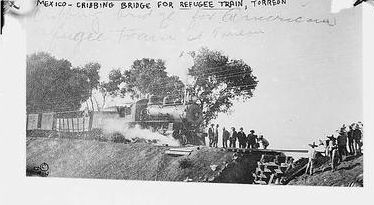
We built three bridges, taking up the material of each after we passed over to be used for the next bridge.
The train reached Pomona about dark and side-tracked for the night.
During the afternoon we had seen dust in the distance which might indicate the rebels, but we finally decided that the dust was from the animals in the distance. About 3 o’clock at night Mr Wolff came through the train and reported that the rebels were coming and that all the men whose wives were in the Pullman could go into that car. A man came to each car, but quietly asked for the conductor. A tremor of fear ran through the entire train at the news of the rebels, but a sigh of relief quickly followed when their peaceable attitude was marked. They arranged for a conference early the next day between Mr Wolff and General Robles, in charge of the rebel forces at that place. General Robles* told Mr. Wolff that our train would have to return to San Pedro.
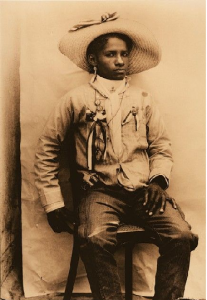
She gave as her reason for this order that General Carranza was cut off on the main line ahead of the and that General Aubert was also on the main line in front with 1500 soldiers, $2,000,000 in money and 115,500 worth of merchandise for Torreon. If our trains went over the line it might give these men (federals) a chance to reach Torreon before the rebels could take it and thereby save the city from the rebels. She said that when we returned to San Pedro that all the federals would have been
withdrawn from there to Torreon and that Torreon would be attacked that night and within three days the city would be in the rebels hands.
A large company of rebels were seen and some shots fired which hurried the action of the refugees as that we had to return and built and destroyed by is on the preceding day.
The train arrived back at San Pedro Tuesday afternoon to await the action of the rebels. Tuesday night the rebel fores made the attack on Torreon, which was immediately telephoned to us.

The next morning the grenading? was so heavy that the phone could scarcely be heard. Wednesday night about 9 o’clock the city was taken by the rebel General Villa, and at once taken possession of enemy forces and a loan of $5,000,000 placed on the city.
The refugee train remain in San Pedro from Tuesday till the following Saturday, a city of 20,000 people, with not an office of any description open and not a policeman or officer of the law in the city. All was as quiet as one would wish.
*Colonel Carmen Amelia Robles, an Afro Mexican woman who was a leader in the Mexican Revolution. Legend has it that she participated in many battles and that she would shoot her pistol with her right hand and hold her cigar with her left.
Refugees Remained (next)
 Follow
Follow